[ad_1]
The competitive landscape of architecture software—the digital technology that enables architects to design the buildings we all inhabit—is a lot like Star Wars. Autodesk, the company that owns industry-dominating programs like AutoCAD and Revit, is The Empire. All other software and apps are the Rebels.
Since introducing AutoCAD (CAD stands for computer-aided design) in 1982 and buying Revit, a 3D information modeling tool, in 2002, Autodesk has offered essential, powerful products. But it has ruled the software galaxy with an iron fist, all but forcing creative firms to work within its strict parameters and closed systems, while navigating complex user experiences and paying homage via onerous and often labyrinthine license fees. Many building departments even require files to be submitted in AutoCAD formats.
But this dominance might be waning, as users demand lower fees and more simplicity, speed, interoperability, collaboration, and automation. New technology is enabling far more powerful offerings from less capitalized sources, and the rebels are starting to mount a vigorous counterattack. The results might not just shake up the industry, but they could change our entire built world.
Life after AutoCAD
“There’s a reckoning coming,” says Martyn Day, editor and founder of AEC magazine, a UK-based journal that has been tracking these shifts, and actively supporting the Rebel side. “The industry has suffered from a lot of greed, a lot of profit taking, and not a lot of innovation. I’m excited about the changes coming.”
In the past few years, notes Day, the number of startups within the AEC (Architecture, Engineering Construction) software space has exploded, producing programs and apps that are lighter, nimbler, cheaper, cloud-based (and hence built for collaboration), and often embedded with AI-powered data and automation. “I’ve never seen it like this before in the 30 years I’ve been doing this,” notes Day.
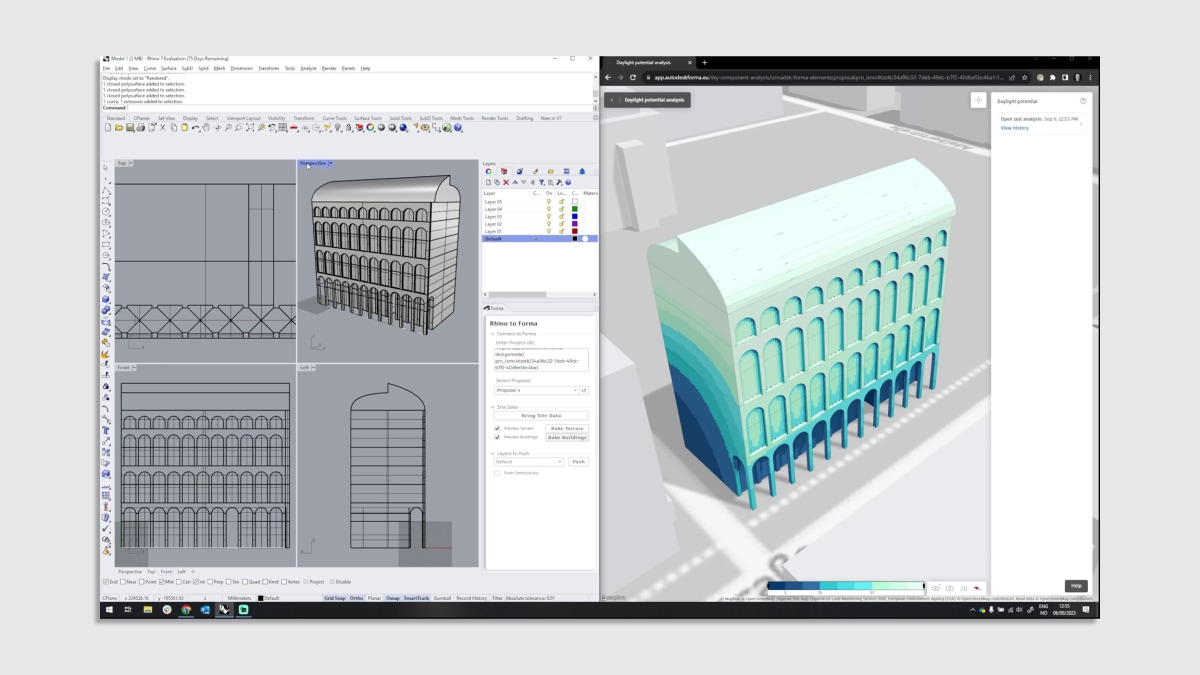
Forma Rhino Extension [Image: Autodesk]
They join the field’s existing “legacy” software, which include a long list of Autodesk competitors that range from 3D modeling tools to full-service professional offerings and include names like Rhino, Grasshopper, V-Ray SketchUP, Catia, Archicad, and Vectorworks.

[Image: Autodesk]
Instead of taking on Revit or AutoCAD directly, many of these new startups bite off smaller pieces of the puzzle, zeroing in on specific users or building types, or offering functionality that behemoth legacy companies haven’t had the bandwidth to master. (Most of these startups, it should be added, appear poised to expand their scope as they continue to build out.)
Many, he notes, have been emboldened by improvements in web-app power, and by programs in other fields, like Figma and Miro, which took off during the pandemic as lightweight, easy-to-use alternatives to existing digital tools. Another layer of Autodesk competition, he adds, is coming from software companies in related fields, like engineering and homebuilding.
Who Are the AutoCAD Rebels?
No startup has emerged as the clear leader, but there are plenty of contenders that include Belgium-based Qoniq, Bangalore-based Snaptrude, and New York-based Arcol. These cloud-based 3D-modeling tools have simpler interfaces, real-time, cloud-based collaboration, impressive data sets (providing information on local sites, regulations, budget compliance, etc.), and emerging design automation tools, which employ AI algorithms to generate and evaluate multiple design alternatives based on input from a user.
Even more targeted offerings include Higharc, which uses similar 3D tools (along with sales and construction data) catered only to American timber frame home building and Swaap, which uses AI and advanced algorithms to transform standard design models into super-detailed construction documents.
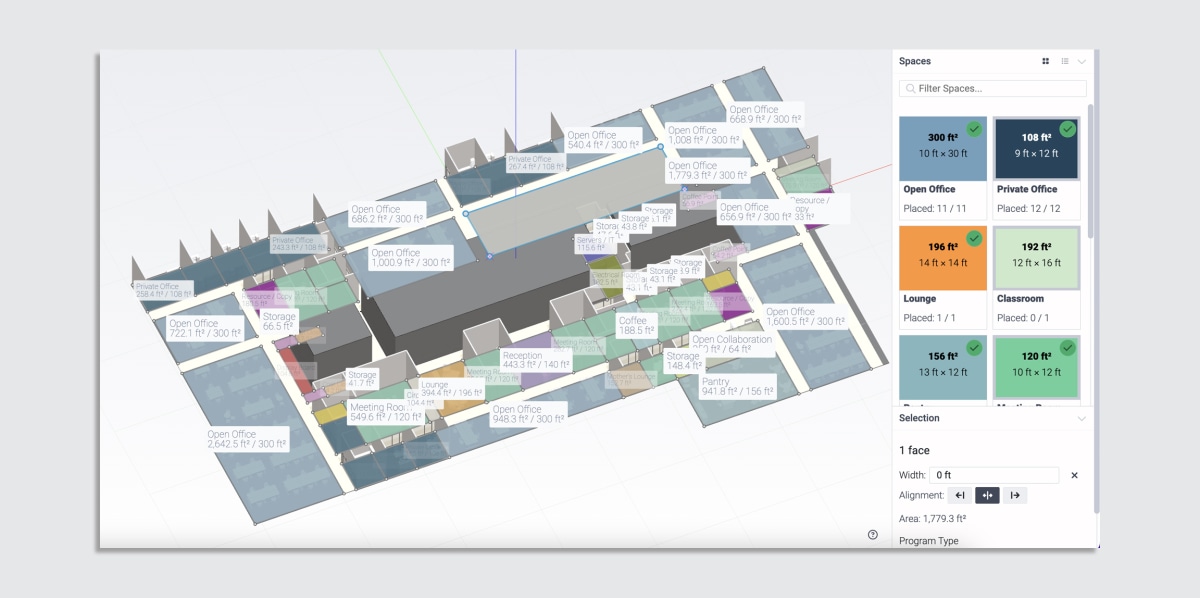
[Image: Hypar]
Bringing cloud-based collaboration to even simpler 2D models (or 2D/3D hybrids) is Los Angeles-based Hypar. Its founders are Autodesk alumni who want to eliminate the tedious process of laying out every beam or floorboard by breaking down a building into automatically produced “systems.” Every time a designer changes their project, these systems—from mechanicals to floor layouts—update with them. “It cuts out a massive amount of manual labor,” notes cofounder Ian Keough. “Autodesk makes incredible stuff, but it’s all done manually. It’s almost like you’re still building toy models of buildings. The models take months and months to build and while you’re doing that, there are changes happening that make you throw that model away.”
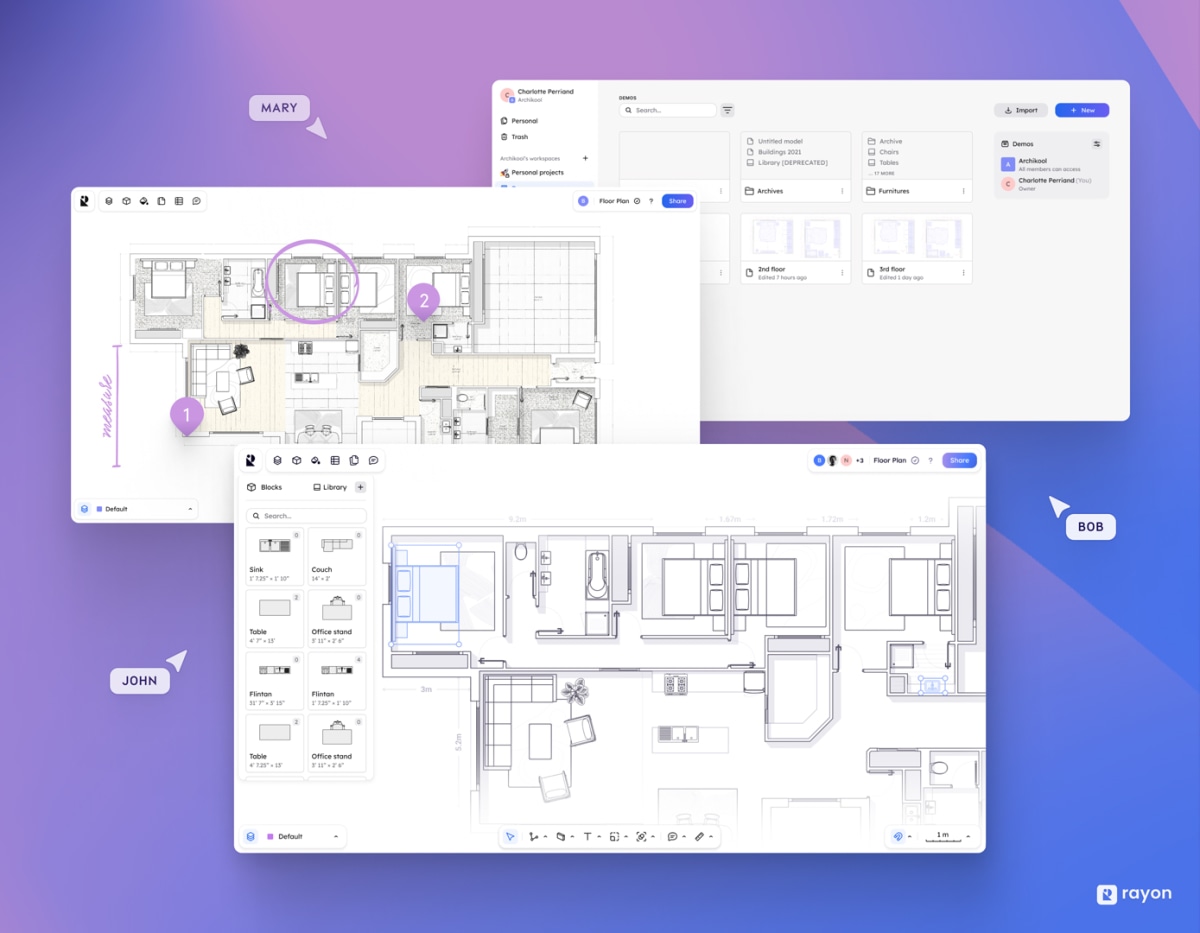
[Image: Rayon]
Paris-based Rayon focuses on simplifying the clunky interfaces of legacy software; kind of like rolling an airplane’s endless cockpit controls into a joystick. All the powerful options are there, say cofounders Bastien Dolla and Stanislas Chaillou, but they’ll only show up when you need them. Like many of these startups, it’s plugging into the power of the AEC community, who are sharing useful data from around the world. “Once you build online you build bridges across cultures and phases,” says Chaillou, who calls this dynamic “a tilt in the culture.”
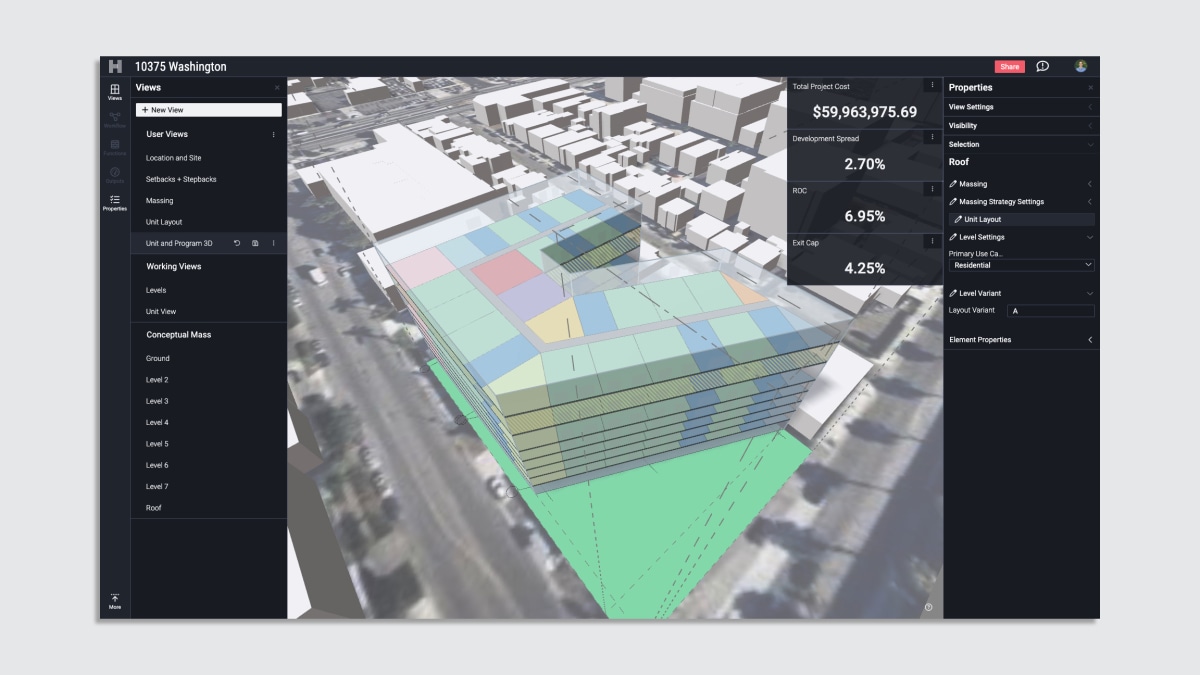
Hypar Space Planning [Image: Hypar]
Rayon says it has raised $5.5 million in seed funding; Hypar has raised a reported $5.8 million; Snaptrude $6.6 million; and Higharc $26.8 million. Most of these companies are in their infancy, so their capabilities are just starting to come to light. Data compilation is just beginning. And almost all are starting to use AI to compile data and enhance automation, but they are just getting a handle on what that will accomplish. Key points, say most, are ensuring that AI collaborates with designers (rather than taking over) and doesn’t become a “black box,” leaving no trail of how it got somewhere.
The Rebels Have Allies
Another assault on legacy software comes from software users themselves. In 2020, a group of dozens of architecture firms, mostly from Europe, sent a now-famous open letter to Autodesk criticizing (among other things) a sharp increase in license fees coupled with a slowdown in productivity improvements. Two years later a group of AEC associations from the Nordic countries sent a similar letter. Like the original, it urged Autodesk to essentially start fresh with Revit, provide better “interoperability and compatibility” of programs with Autodesk’s software suite, and develop a “roadmap” for the future.
Autodesk has released a public roadmap, listing new tools and dozens of enhancements of Revit and other products. But Andy Watts, Director of Design Technology at UK firm Grimshaw and one of the authors of the original open letter, calls it largely a PR gambit, without any meaningful changes. He and his colleagues decided to take another route, unveiling at last summer’s NXT DEV conference what they called the Future AEC Software Specification, which outlines exactly what architectural software developers should create. At the top of the list is a “universal data framework that all AEC software platforms can read from and write to, allowing for a more transparent and efficient exchange of data between platforms and parties.” More requests include access to live data, user-friendly interfaces, better value, and more transparency on what companies are doing with users’ data.
The Empire Strike Back
Autodesk, whose current revenue (TTM) is $5.21 billion, says it is listening to industry criticisms and improving its legacy products. The aforementioned roadmap of Revit enhancements lists dozens of changes that offer new tools (including generative AI, automated site information, etc), provide more data, and help it run faster, sync more efficiently with other programs, and look cleaner.
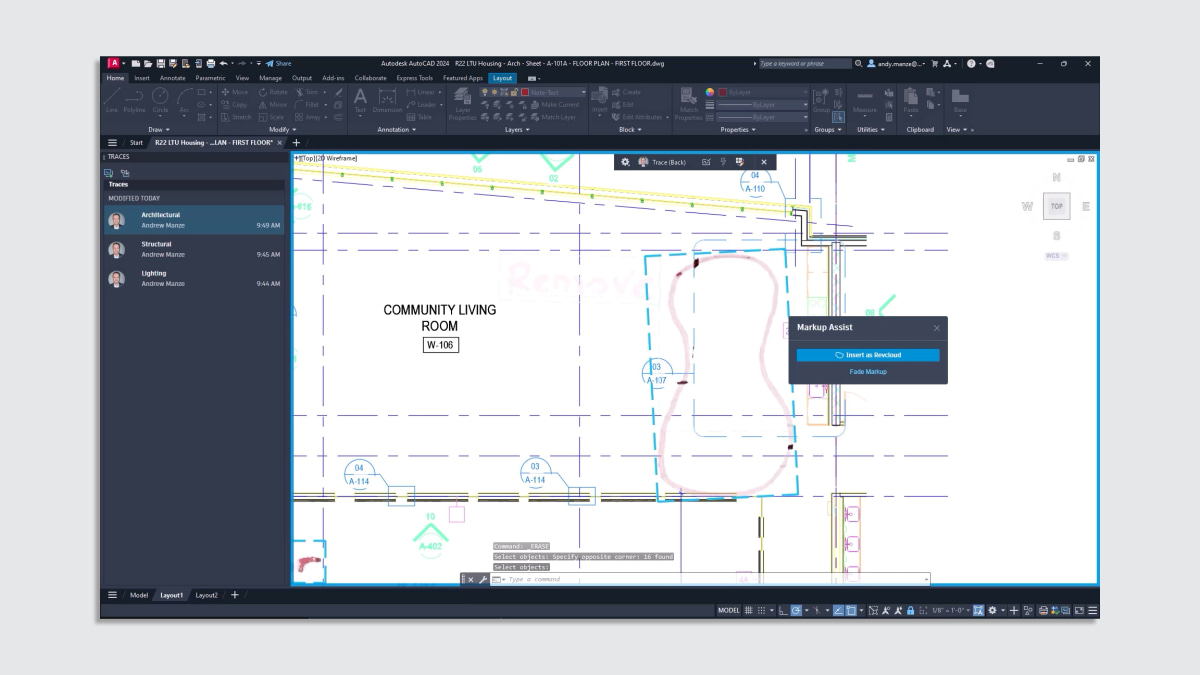
AutoCAD Markup Assist [Image: Autodesk]
For now, the company appears content to let other firms’ technologies layer on top of its more powerful, established offerings via plugins and other connections. It suggests that the influx of new competition can benefit the industry as a whole, bringing new innovation and investment.
“As much innovation as we can get is a good thing,” says Amy Bunszel, Executive vice president, Architecture, Engineering and Construction Design Solutions at Autodesk. “I’m excited to see that there’s been an interest in the investment community to invest across the whole ecosystem. I think that’s going to make everybody better.”
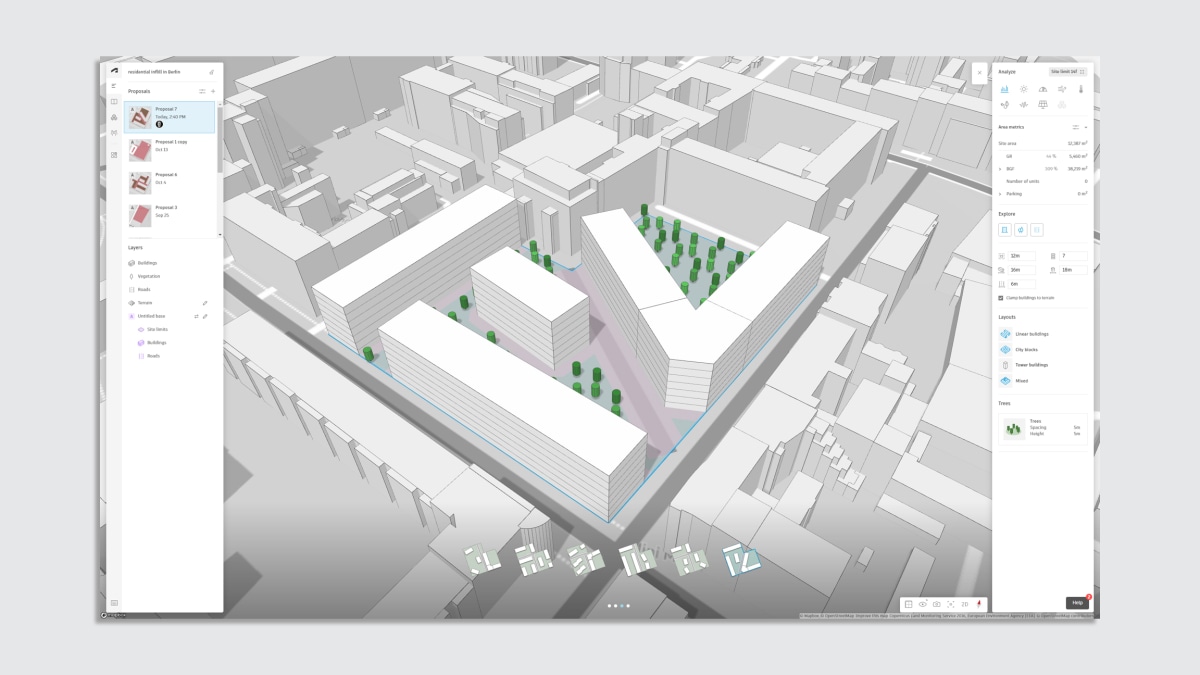
Forma: Generative Design [Image: Autodesk]
Looking toward the future, the company has released Forma, a cloud-based tool that, for now, focuses on 3D conceptual design. Carl Christensen, VP of Product at Autodesk, says eventually Forma will serve as a cloud-based platform supporting all of the company’s AEC technologies. He believes a cloud-based software is more responsive to users, more interoperable with other software, and more fluent with emerging technologies like AI and VR. (Autodesk is leaning heavily into AR with Autodesk XR, a new immersive design review tool allowing teams to review projects together in VR, among other things.)
The move seems indicative of another emerging Autodesk strategy: expanding far deeper into the larger construction world, into fields like infrastructure, construction management, engineering, and planning. In 2021, the company unveiled Autodesk Build, a new project management software for construction derived from a program once called PlanGrid. It’s part of the Autodesk Construction Cloud, a slew of construction-related software unveiled in 2019.
But as the many Davids to Autodesk’s Goliath evolve and become more powerful, some in the field say they could become replacements for—not add-ons to—Autodesk’s software. Just building plug-ins for larger companies like Autodesk, said Snaptrude CEO Altaf Ganihar “is like slapping band-aids on much deeper problems.” Day, who says that Autodesk is “betting the farm” on the cloud, claims that the company has tried to invest in Snaptrude multiple times, so far without success. “Their weakness is they have no next generation. That means your software is a dead man walking,” says Day. “I think they want to buy Snaptrude and be done with it.”
Whichever moves they make, many in the field fear that Autodesk’s gradual transition to the cloud will simply give it more control of user data and keep users locked into the Autodesk ecosystem. One perhaps ominous sign: Autodesk’s Bunszel acknowledged that the company would not at this point embrace a universal data framework.
Matias del Campo, a Professor of Architecture and Urban Planning at the University of Michigan’s Taubman College for Architecture and Urban Planning, compares the proliferation of new tools and data—many available on open source networks like Github—to the evolution of the music industry during the explosion of music sharing. Companies will need to become more open and offer more innovations to compete, although the corporate world, seeking stability, may always lean on the tried and true.
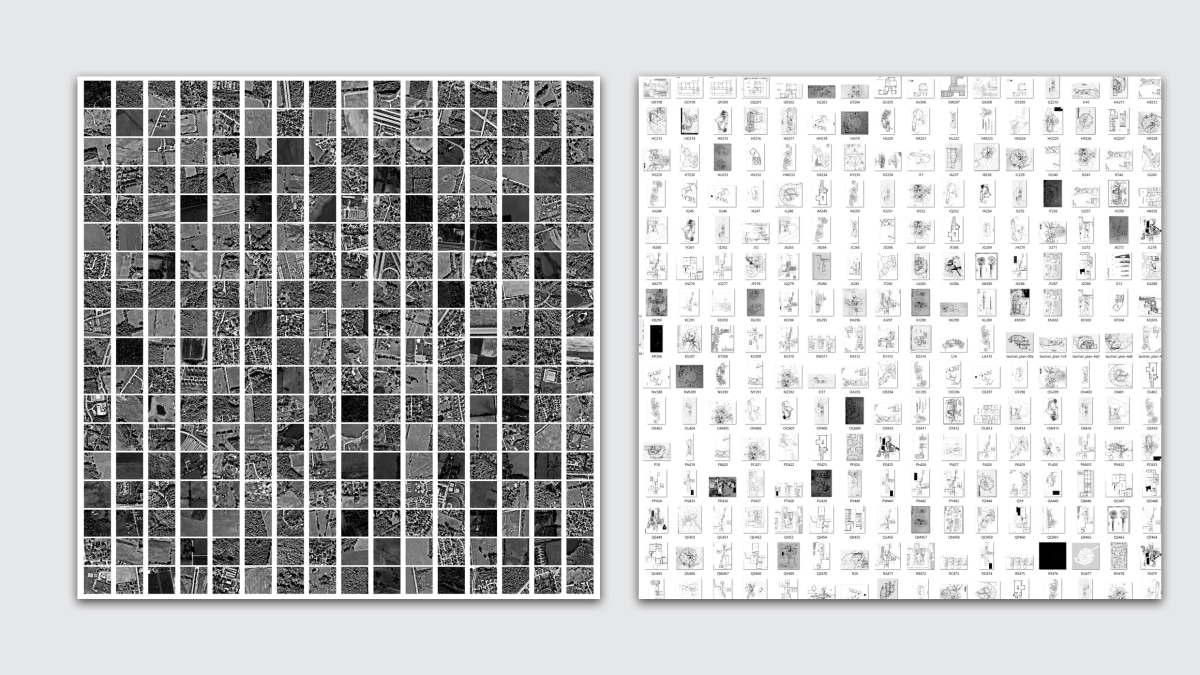
Datasets from University of Michigan [Images: University of Michigan]
The AI factor
Del Campo sees powerful paradoxes arising from AI, which he thinks is destined to transform the industry more than anything. Just as it will free bandwidth for creatives to focus on less mundane tasks, it may also turn buildings into recipes, spitting out mass reproductions assembly line-style. And as it opens up powerful new options, it may make many architects obsolete.
“It’s a really interesting combination,” he says, of the realities facing his students. “On the one hand, you feel the anxiety they feel that it’s changing their life. But it’s also understanding that if you don’t engage with it, you will not be able to shape it. Others will do it for us. Then we will have no say in shaping architecture.”
Hypar’s Keough sees collaborative tools and emerging automation as shrinking design loops, bringing disparate design fields closer together, enabling more precise, factory-based construction, and improving the economics, safety, and overall quality of buildings. He think products like his can disrupt Autodesk’s model by offering changes that the bigger company’s longtime user base might not be ready for. He also sees the industry (and even dinosaur-like local building departments) shifting from a paper-based model, enabled by clunky digital files, to a completely online one.
“Ten years from now, the industry won’t look anything like the industry we have now,” he says. “Now it’s an industry that has been carved up and calcified. As a startup, we can afford to make a long-term bet on these changes.”
[ad_2]
Source link

Comments are closed.